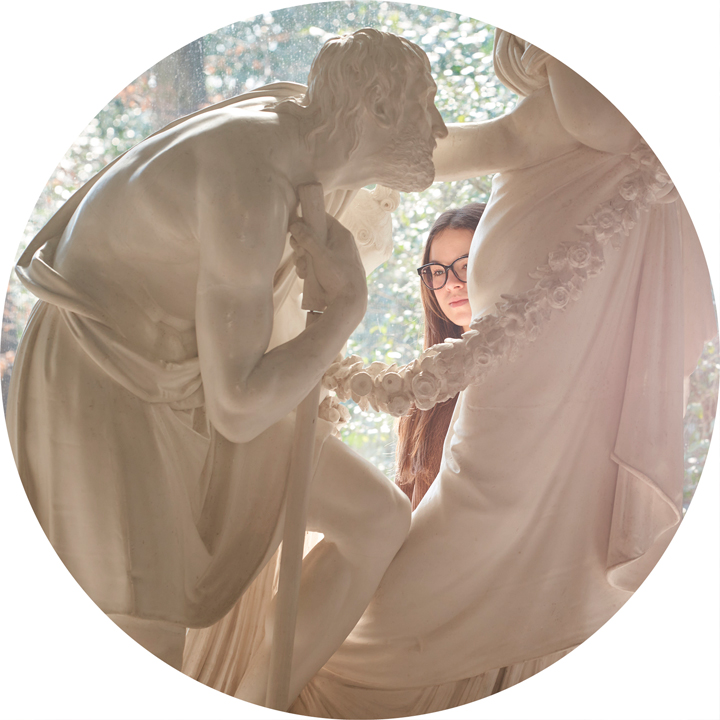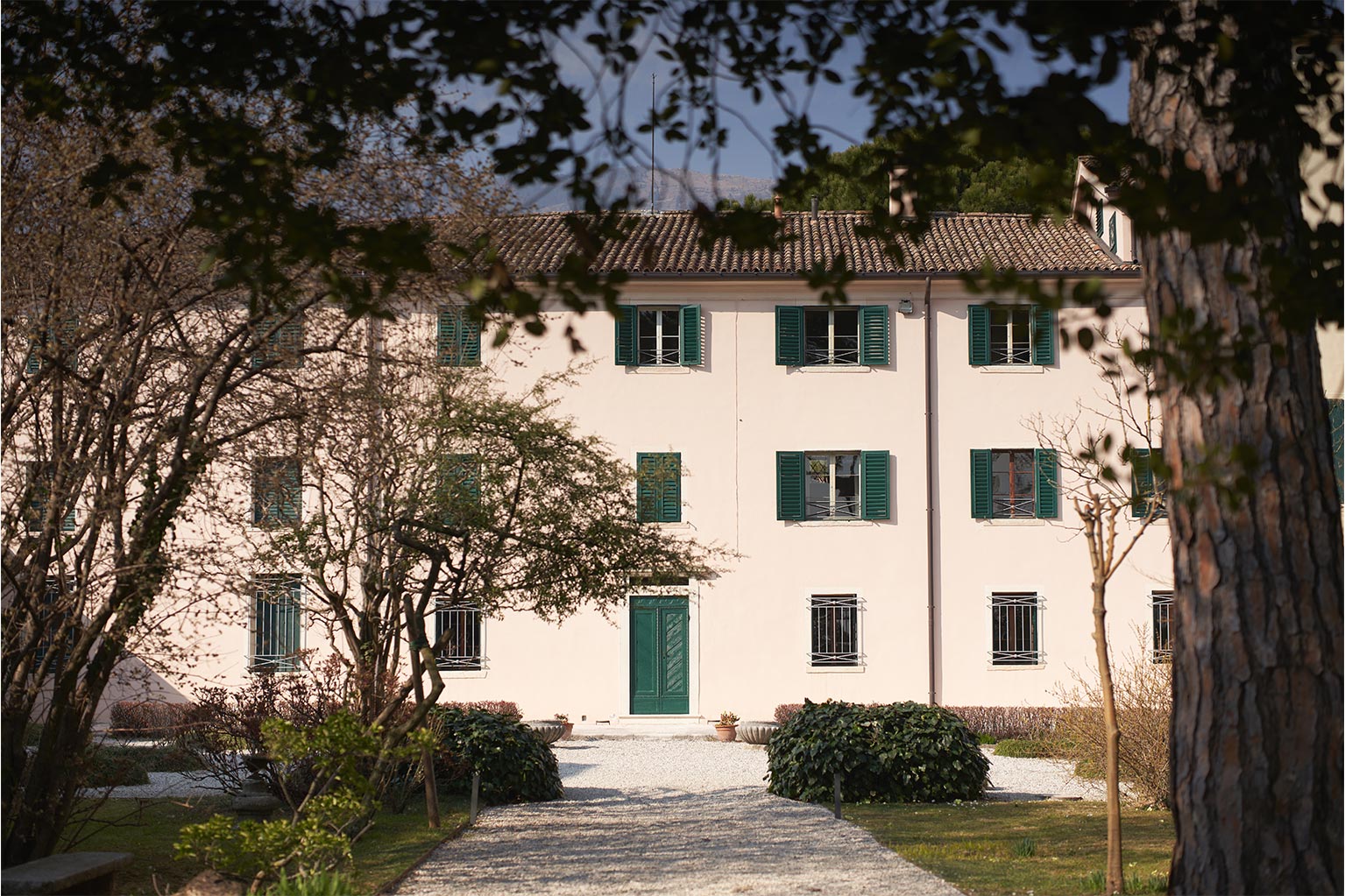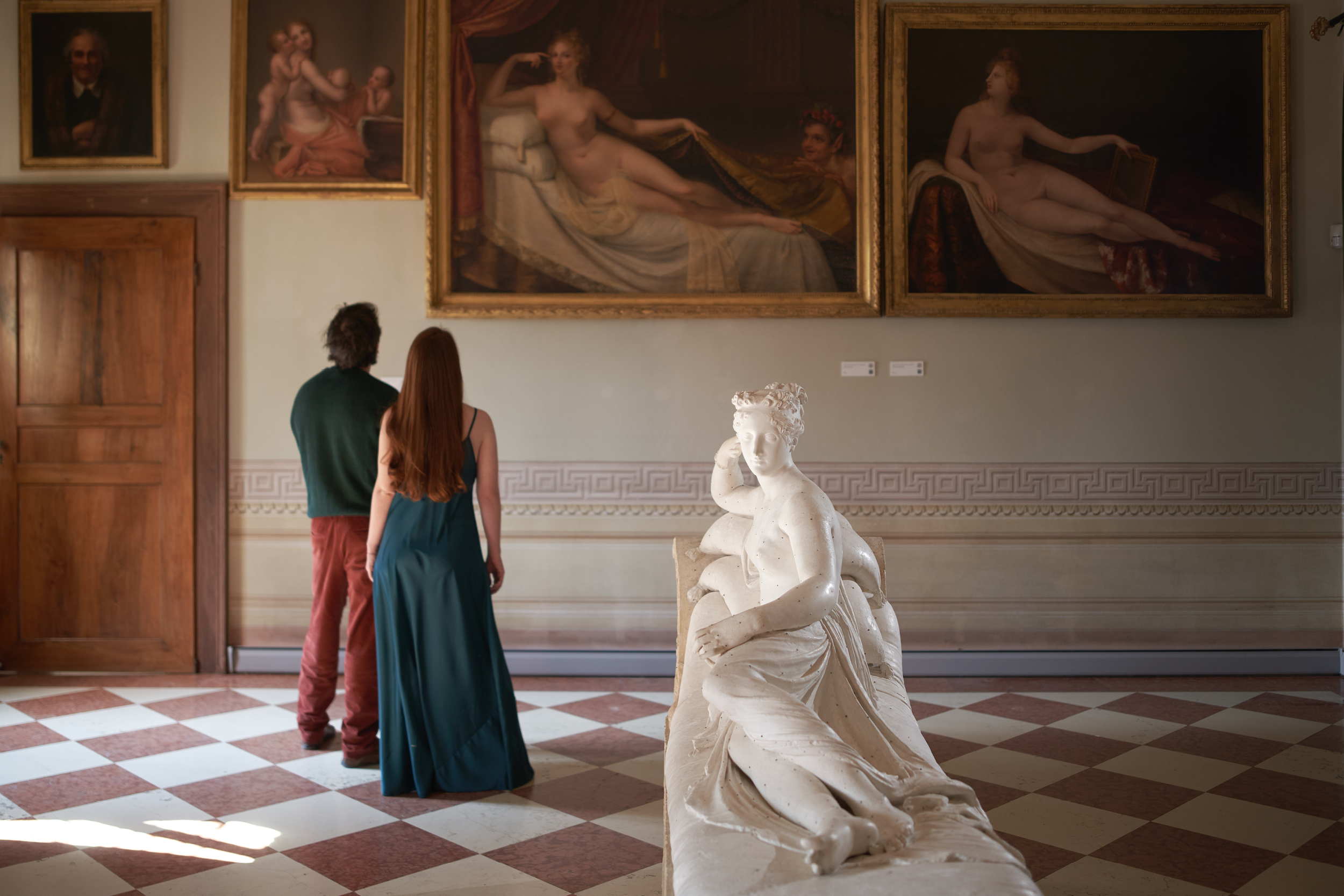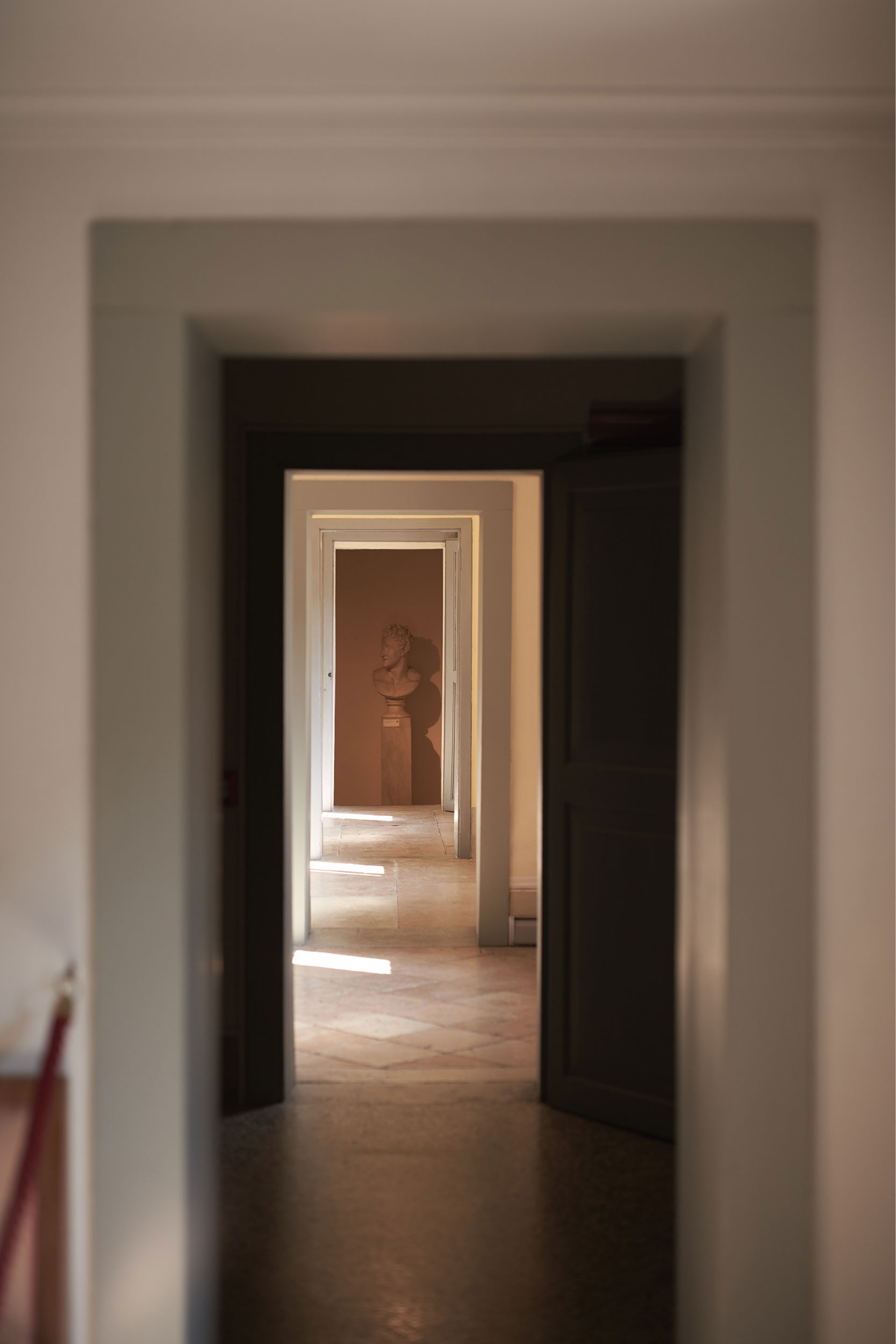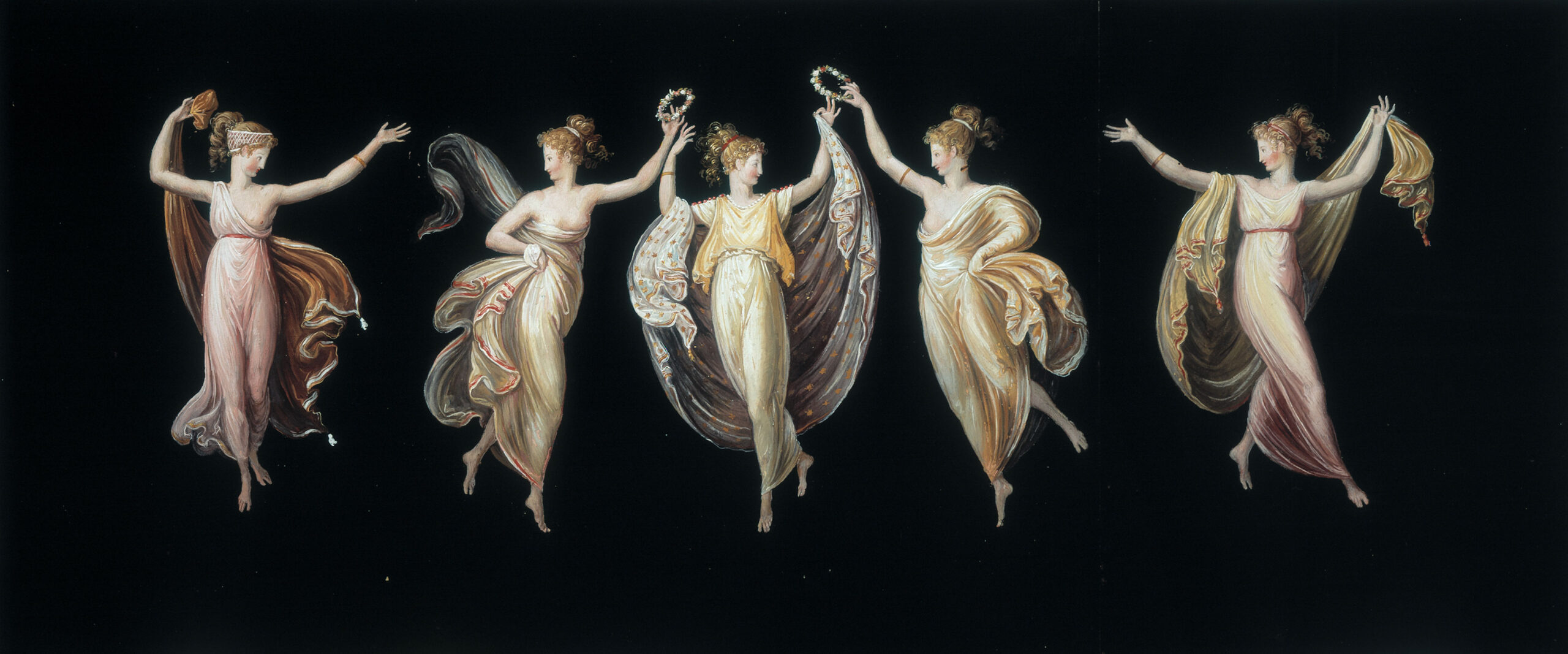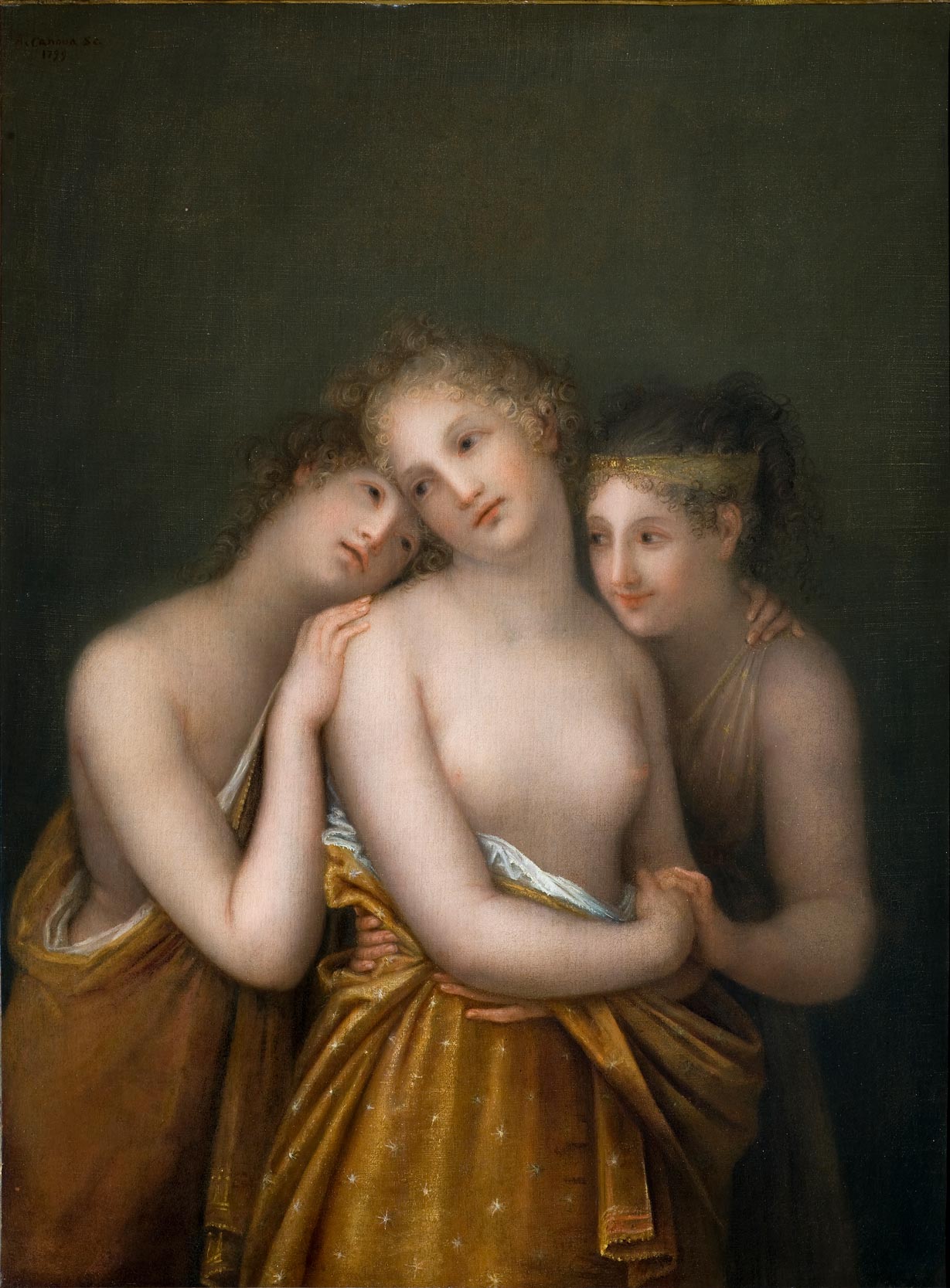The Birth House
Antonio Canova’s birth house is a typical 17th-century home. It includes a central body divided into multiple floors, where all his activities took place during the day and at night; and all the annexes, such as the cellar, the storage closet, the long colonnades, where the working tools were kept, the shed for draft animals, the carriage storage area, and the wells.
After the earthquake of 1695 that caused the collapse and destruction of many buildings in Possagno, the house was renovated and expanded by adding more rooms. Today, visitors can admire the house that Canova renovated between the end of the 18th century, when the turret on the last floor of the building was erected, becoming the artist’s studio, and the beginning of the 19th century, when he decided to create the Mirror room for his guests.
View of the Birth House, external South facade | ph credits Otium/Favotto
The few pieces of furniture that did not succumb to the ravages of time are original workpieces of the beginning of the 19th century, some of which came from Canova’s Roman workshop. Today, the artist’s home serves as a varied and valuable art gallery that holds portraits of Antonio Canova, 15 oil paintings on canvas, temperas on paper, a few engravings, drawings, some marble sculptures, working tools, memorabilia, and his personal effects.
Three rooms in particular offer an interesting insight into his life: the room where Canova was born on the first floor, the basement of the house where the sculpting studio was located, and the Turret which was used as a Library, and is where Canova painted the impressive altarpiece depicting the Deposition of Christ, now stored in the Temple of Possagno.

Antonio Canova’s original dresses exhibited on the first floor of the Birth House.
The Turret
Haunted by his lack of a proper education, Canova started to devote much of his time to reading and listening antique and modern literary classics on poetry, history, and critics, both in Italian and French. The sculptor, in fact, was not only used to read the chosen texts on his own, but he also loved to have someone read them out loud while he was working in his studio, so that he could always make the most of his time. The manifest result of this passion was the construction of a Turret, where the artist could dedicate himself to studying, that took place at the beginning of the 19th century. The building was designed for the purpose of collecting the numerous books he owned. The Turret represents a peculiar feature of the House and the Library it accommodates was once defined “extremely vast and renowned and open for the sake of the public”. In later life, the sculptor used the Turret as a place for meditation and reading. Today, this space houses the archive of Canovian busts.

The artist’s studio inside the Turret on the top floor of the Birth House
Tempera Paintings
The Birth House hosts many temperas on paper by Canova. Their peculiarity lies in the black background that takes inspiration from the Pompeian style.
The temperas were executed by Canova during his stay in Possagno from 1798 to 1804, and in the following years were engraved and printed several times. They depict Dancers, Nymphs with Cupids, and Muses with Greek philosophers and writers. This particular facet of Canova is quite unexpected, gentle, colorful, and hints to a subtle humour. The figures are “fluid as are thoughts and beautiful as if they were made by the Graces’ hands” and they perfectly evoke a feminine classicism.
A considerable group of temperas takes inspiration from the theme of dance, that Canova loved deeply and is connected to his profound poetic: like his art tends to the ideal beauty, dance offers a view of the human body in constant elevation, breaking free through dynamism and rhythm. The variety of poses is extraordinary and the repertoire of gestures the artist came up with can undoubtedly compete with the theater performances of his period.
Antonio Canova, Venus with Faun, 1792, oil on canvas

Gypsotheca
Gypsotheca
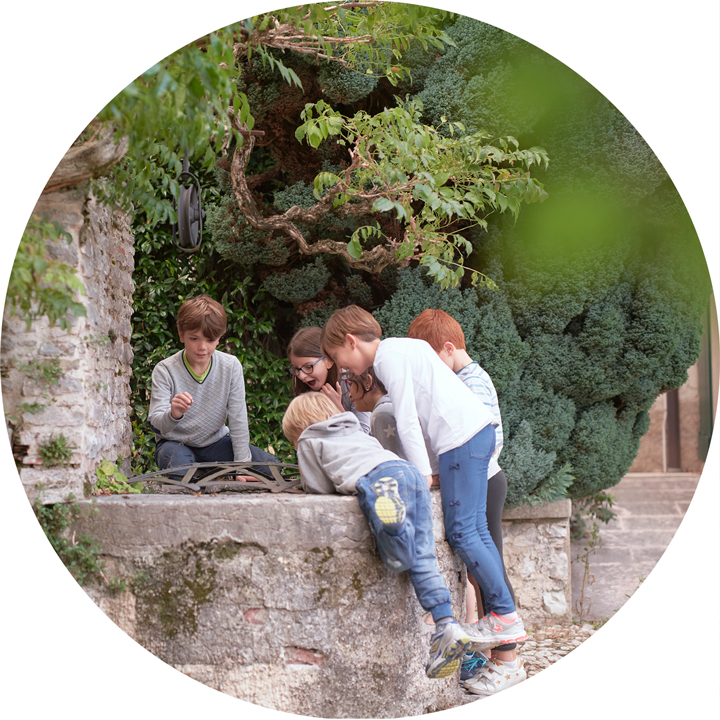
Garden
Garden

Library
Library
